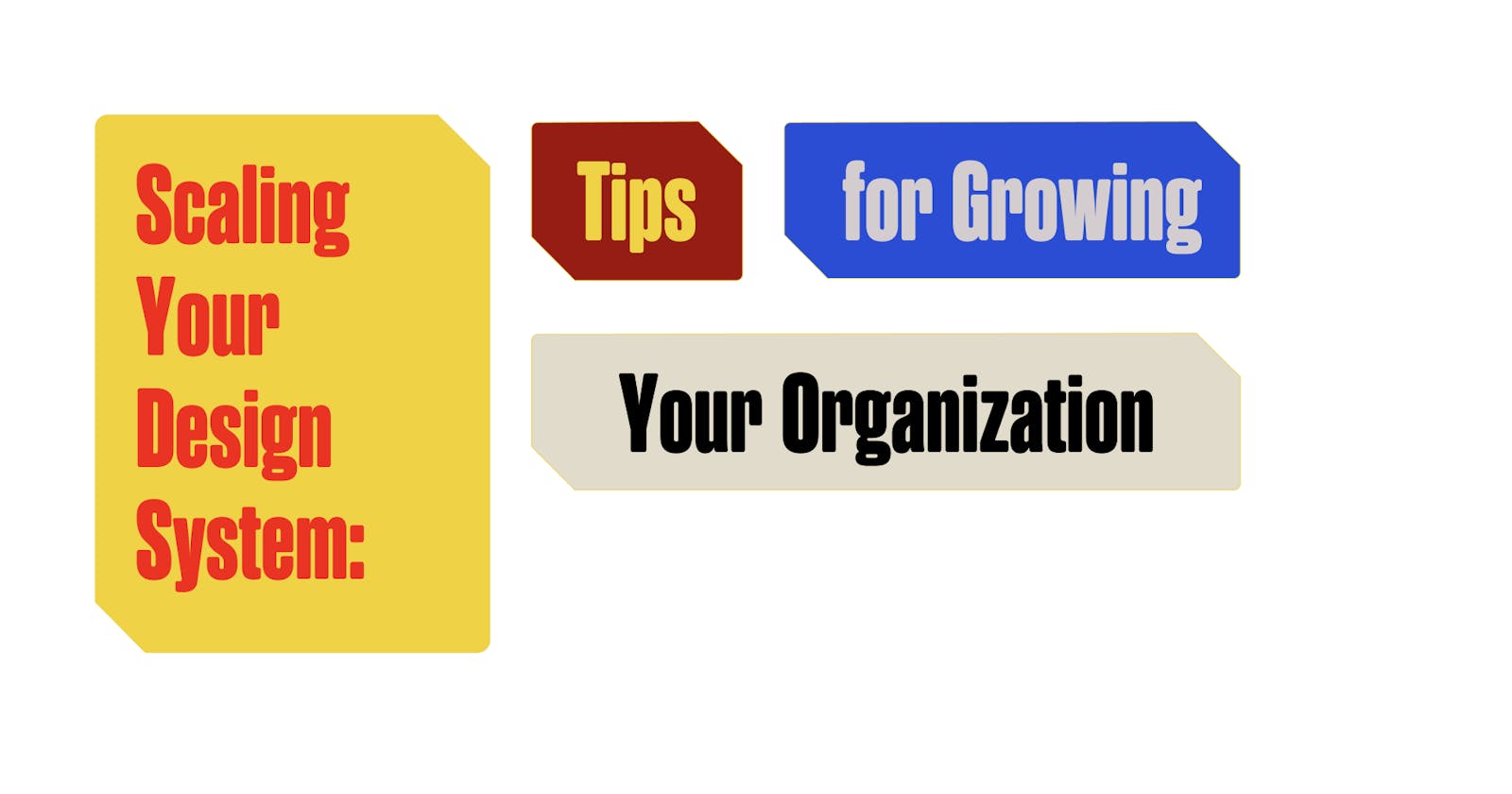Table of contents
No headings in the article.
A design system is a crucial tool for creating consistency and efficiency in your design work. However, as your organization grows, your design system must also grow and evolve to meet the changing needs of your team. Scaling your design system can be a daunting task, but with the right strategies and approaches, you can ensure that your design system continues to support your team's work effectively.
In this article, we'll explore some tips for scaling your design system and growing with your organization.
1 - Establish Clear Guidelines and Standards
As your team grows, it becomes increasingly important to establish clear guidelines and standards for your design system. This includes defining your brand identity, creating design principles, and establishing best practices for using the design system. By setting clear standards and guidelines, you can ensure that your team is aligned and working towards the same goals, even as the team grows.
2 - Plan for Flexibility and Customization
As your organization grows, you may find that different teams or departments have different needs and requirements for their design work. To accommodate this, it's important to plan for flexibility and customization in your design system. This can include creating modular design components that can be adapted to different use cases, or providing guidelines for how to customize the design system to meet specific needs.
3 - Develop a Governance Model
As your design system grows, it becomes increasingly important to have a governance model in place to manage it effectively. One might ask what is "Governance Model" is, and it is a framework or set of guidelines that defines the roles, responsibilities, and decision-making processes for managing a system or organization. In the context of a design system, a governance model helps to establish the processes, policies, and procedures for maintaining the design system and ensuring its effectiveness over time. This can include creating a dedicated design system team or committee to oversee the design system's development, maintenance, and evolution. A governance model can help ensure that your design system remains consistent and effective, even as your organization grows and changes.
4 - Test and Iterate
Just like any other aspect of your design work, it's important to test and iterate your design system as it grows. This can include conducting user research or UX audits with the design team to understand how the design system is being used, and making changes based on feedback from your team or stakeholders. By testing and iterating your design system, you can ensure that it continues to meet the changing needs of your organization.
5 - Invest in Documentation and Communication
Finally, as your design system grows, it becomes increasingly important to invest in documentation and communication to ensure that your team is using the design system effectively. This can include creating detailed documentation, providing training and resources, and establishing channels for communication and collaboration. By investing in documentation and communication, you can ensure that your team is aligned and working towards the same goals, even as the team grows.
Conclusion
Scaling a design system can be a challenging task, but with the right strategies and approaches, you can ensure that your design system continues to support your team's work effectively. To scale your design system, you should establish clear guidelines and standards, plan for flexibility and customization, develop a governance model, test and iterate, and invest in documentation and communication. By following these tips, you can ensure that your design system grows with your organization and continues to provide value to your team.
Stay Slayin

